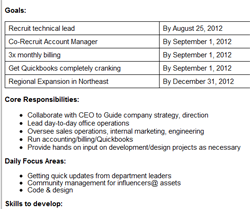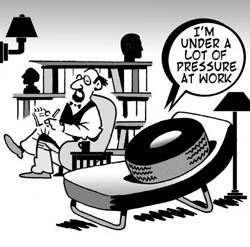 For most start-up leaders, accounting is low on the priority list. After all, you have product, hiring and all of that fun stuff. But don’t forget: cash is king. You must understand how much of it you have so you can make informed decisions for product and hiring.
For most start-up leaders, accounting is low on the priority list. After all, you have product, hiring and all of that fun stuff. But don’t forget: cash is king. You must understand how much of it you have so you can make informed decisions for product and hiring.
The Good News: This isn’t the boring accounting you slept through during freshmen year. Real business accounting is actually really interesting, and when done right, incredibly powerful to help you grow your business.
How and when do you start with accounting? Let’s break it down:
1. Start as soon as cash is involved
If you are hacking away at a software product and haven’t bought or sold anything yet, it’s too early. But as soon as you start buying or selling, you need to be tracking those numbers like a crazed sports fan pouring over Fantasy Football scores.
2. Think of it as $ in and $ out
Your business is made up of cash in and cash out. You sell and buy stuff. You send invoices to customers and pay vendors. So, that is the kind of stuff you need to be thinking about and tracking. When you write a check to pay a contractor, will you remember how much you paid them and why? Yes, if you account properly.
3. Get a new friend: Quickbooks Online
I have a close relationship with good old Quickbooks Online. This $27 per month cloud software from Intuit handles everything from invoicing to payroll to bank reconciliations. As soon as cash gets involved in your business, grab a Quickbooks Online subscription.
4. Build out a Chart of Accounts
A Chart of Accounts is essentially a list of all of the ways that you spend money and make money. There are Salaries, Facilities, Office Utilities, Service Revenue, etc. You can use each of these broad items to categorize your revenue / expenses and understand which parts of your business are the most expensive. For example, a few items from the influnencers@ Chart of Accounts include:
5000 Salaries, 5010 Contractors, 5040 Promotional Goods, etc. The number next to each topic is just a handy way to quickly reference it.
5. Break your business down into departments
As you grow, you’ll want to know how much it costs to sell vs. how much it costs to build product and how much you spend on office supplies. To do that, we break the business down into different departments, referred to as “classes” in Quickbooks. Your executive team should all sit down to think these classes out together because it is an excellent way to keep everyone on the same page with how the business is structured. For example, I sort the influencers@ departments into:
G&A, Sales, Service, Product, Account Management. Boom, simple. Everything I spend money on is for one of those five areas.
6. Get an accounting mentor
When I first joined influencers@, I barely knew anything about real business accounting and our Quickbooks looked like a scene from a horror movie. Through Northeastern’s IDEA program I got connected with Ed Jaworski from SMB Partners who together with Ryan Durkin taught me everything I know about how to leverage Quickbooks.
7. Get it right the first time
Figuring out these categories and setting up Quickbooks is confusing. The worst thing to do is mess it up the first time and have to fix all of your old transactions months later. I’ve been there – it’s a scary place. Do your research, grab an accounting mentor and get it right the first time.
For any Boston entrepreneurs who are reaching the point of needing to understand basic business accounting, feel free to shoot me an email – I’d be glad to help!
 How fast do you think I can bike from my house to the
How fast do you think I can bike from my house to the  Every product needs a roadmap: that
Every product needs a roadmap: that 
 As the former President of the
As the former President of the  On Sunday June 3rd,
On Sunday June 3rd,  There is a certain breed of people who are what I call “ultra-reliable.” They have an innate knack for getting things done, and when you assign them something, you can sleep well knowing that it’ll be complete on-time and with the utmost quality. As I sat in a meeting last week with
There is a certain breed of people who are what I call “ultra-reliable.” They have an innate knack for getting things done, and when you assign them something, you can sleep well knowing that it’ll be complete on-time and with the utmost quality. As I sat in a meeting last week with  If there is a gold rush equivalent in the entrepreneurship world, it is without a doubt a hunt for developers. One surprising place where more high quality developers are starting to appear is in
If there is a gold rush equivalent in the entrepreneurship world, it is without a doubt a hunt for developers. One surprising place where more high quality developers are starting to appear is in  Sounds a bit insane, but it actually might be one of the more brilliant pieces of advice I’ve heard as I sat at dinner with
Sounds a bit insane, but it actually might be one of the more brilliant pieces of advice I’ve heard as I sat at dinner with  The best learning takes place under pressure. While you can observe someone making a mistake and learn from it, it is not nearly as effective as making the mistake yourself. Consider the following challenge I encountered back when I was a 14 year old
The best learning takes place under pressure. While you can observe someone making a mistake and learn from it, it is not nearly as effective as making the mistake yourself. Consider the following challenge I encountered back when I was a 14 year old  Like many recent college graduates, as I finished my last semester this past May I felt like I was on top of the world and qualified for anything. After all, I had a great GPA, led a massive student club – the real world felt as though it would be in the palm of my hand.
Like many recent college graduates, as I finished my last semester this past May I felt like I was on top of the world and qualified for anything. After all, I had a great GPA, led a massive student club – the real world felt as though it would be in the palm of my hand.